In the footsteps of the pilgrims: EuroVelo 3 project ends in Santiago de Compostela
The EuroVelo 3 – Pilgrims Route international final conference was held on 25-26 September 2019 at the Museum of Pilgrimage, home to a fascinating permanent exhibition which traces the history of pilgrimage to Santiago de Compostela from different points of view. International experts from all around Europe gathered in this place charged with history to share the lessons learned during the project and other best practices from the rest of the continent. This event was also an opportunity for local actors to share their knowledge and to learn about the project with simultaneous interpretation between English and Spanish being provided. The presentations are accessible here.
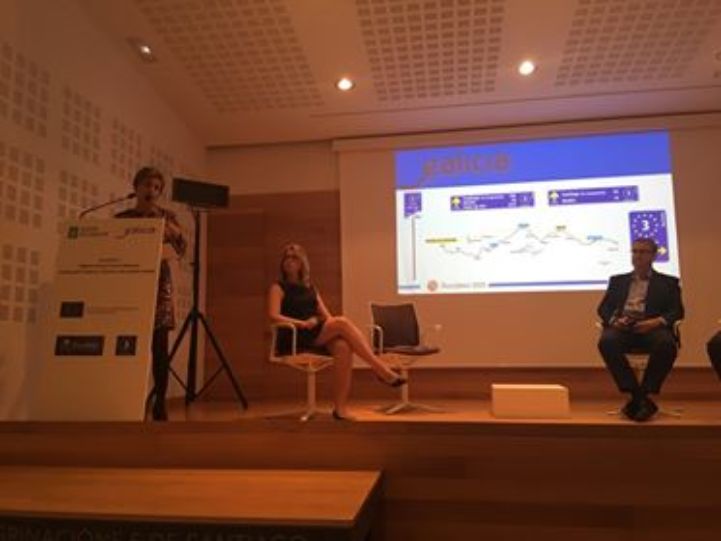
The day started with an introduction from Nava Castro, director at Turismo de Galicia, who welcomed the participants to the event and the beautiful region of Galicia. Four keynote speakers took the floor during the morning plenary: Irene Gonzalez Toledo from the Ministry of Industry, Trade and Tourism, Nava Castro, Alan Vella, project adviser at the European Commission (EASME) and Eladio Fernandez Galiano from the Council of Europe.
Irene Gonzalez presented cycling tourism in Spain and existing long-distance cycling routes, such as the Camino de Santiago and the Spanish network of greenways. She talked about the work being undertaken to develop EuroVelo 3 in Spain and she also gave some insights on the habits and preferences of cycle tourists (both domestic and foreign) in Spain.
Cycling pilgrimage is more and more popular and now makes up 6% of all pilgrims
- - Nava Castro, Turismo de Galicia
Nava Castro returned to the stage to give an overview of cycling routes in Galicia and of the services and materials Turismo de Galicia provides to the tourists. They promote sustainable tourism in the region via their “BTT Centres” and they try to attract tourists outside of the cycling season. Regarding EuroVelo 3 in Galicia, Nava explained the development of a separate route to avoid conflicts between pedestrians and cyclists in certain parts of the route, and the ongoing signing process.
In a project, you should be thinking not only of your particular destinations, but how your destination can link well with other parts of the project
- - Alan Vella, European Commission (EASME)
The third speaker of the morning plenary was Alan Vella, project adviser of the EuroVelo 3 COSME project at the European Commission. He presented the point of view of European project management, in particular the EASME and COSME programs. He gave some tips for good project management to the audience and stressed that in a COSME project, the action is not limited to the 18 months of co-financing. It is up to the partners involved to push for further developments at the end of this period!
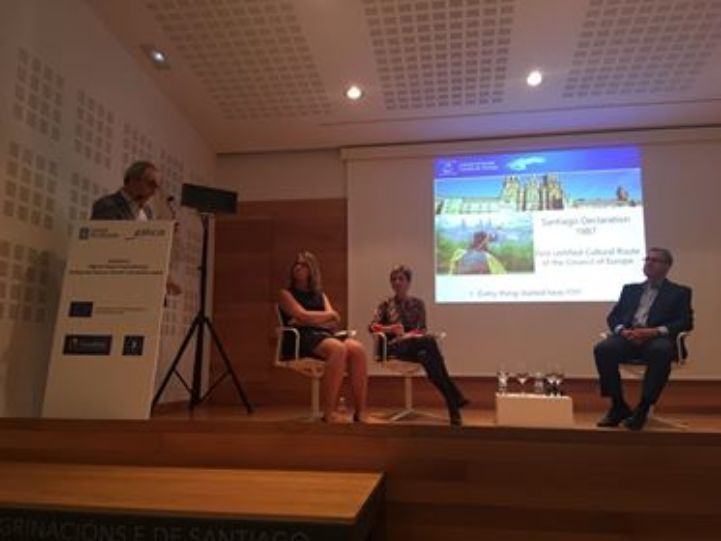
Limits are necessary to protect the cultural object and the authenticity of the experience from mass tourism. But we have to think of tourism positively because it has a universal value; it can make people less stupid!
- - Eliado Fernandez, Council of Europe
The morning plenary ended with a very inspirational speech from Eliado Fernandez, who started by introducing the Council of Europe, its Cultural Routes and in particular the Santiago de Compostela Pilgrims Routes, first certified “Cultural Route of the Council of Europe” in 1987. Two other part of the EuroVelo network are certified as cultural routes: the Via Romea Francigena (partly EuroVelo 5) and the Iron Curtain Trail (EuroVelo 13), which was certified in May 2019! Among the 38 Cultural Routes of the Council of Europe, many different types of heritage are highlighted: historical figures, artists, architecture, confederations… These routes position themselves as bridges between people and between countries.
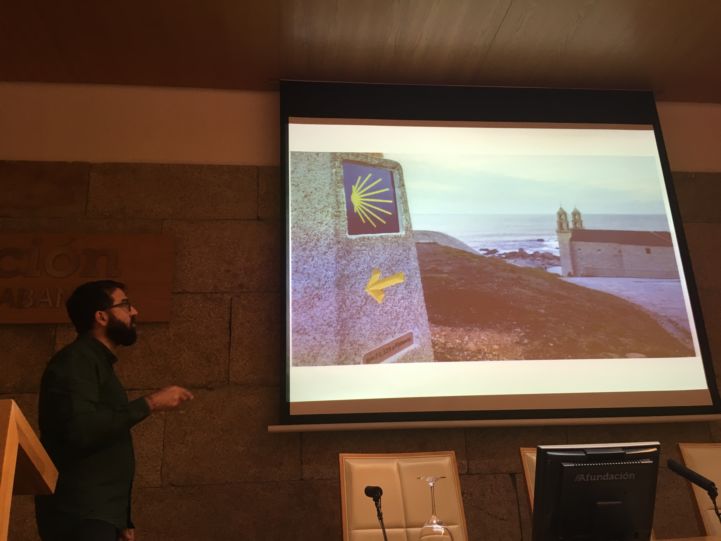
Before and after the lunch break, representatives from the project partners and some external associations and companies from the cycling tourism sector gave insightful presentations in the frame of four parallel sessions. The topics were various and related to different aspects of the project: “Cycling Tourism in Numbers”, “Promoting Cycling Tourism Routes and Products”, “Putting the Right Infrastructure in the Right Place” and “Improving Access to UNESCO Sites by Bike”.
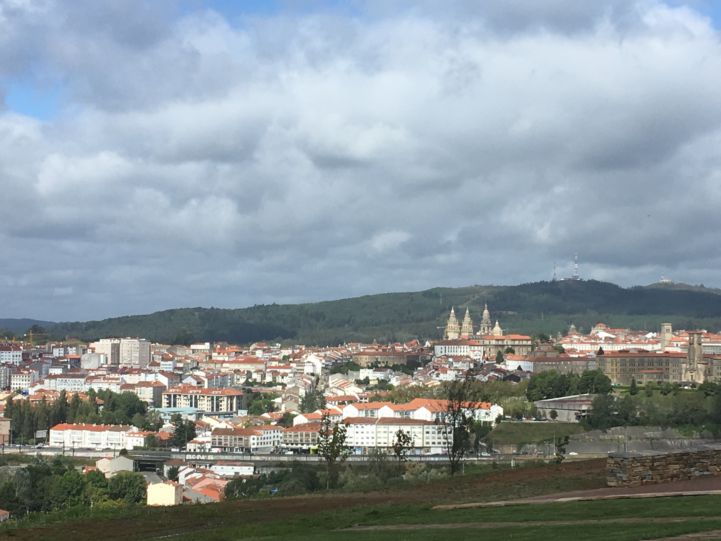
A last coffee break accompanied by delicious Galician pastries already brought the participants to the closing plenary, in which Ed Lancaster from the European Cyclists’ Federation gave a summary of the project’s achievements. This enabled those in the audience who had not been actively involved in the project to get a clearer idea of its results and future prospects.
Think of Europe as a big city where we all live and share, and the Pilgrims’ Way would be the main avenue, where we share ideas. Think about this in relation to the EuroVelo 3 project!
- - Carmen Leyte, Spanish Senator representing Galicia
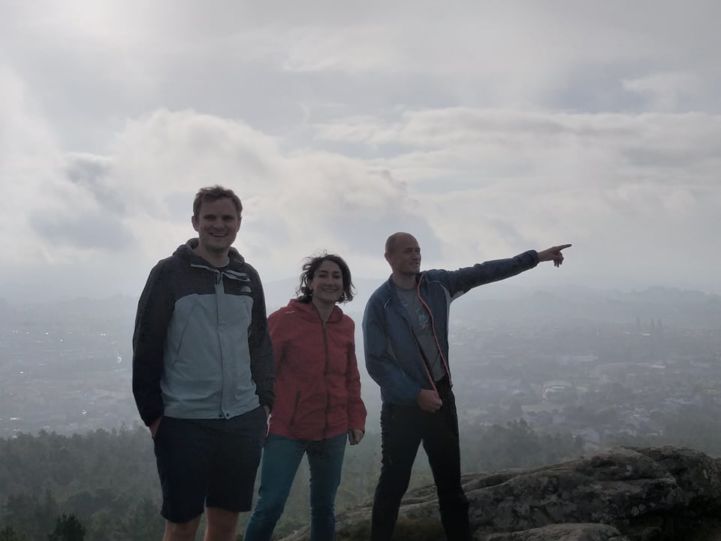
Then Carmen Leyte, Spanish Senator representing Galicia, gave an inspiring speech on Santiago’s Way and the European Institutions. She presented an outline of the Camino de Santiago’s history, which started as far back as the 9th century, when Spanish King Alfonso II, the first pilgrim, walked to Santiago de Compostela. Carmen finished her speech with a call to a work towards harmony, coexistence and fraternity along the Pilgrim’s Way in Europe, because “together, we walk better”.
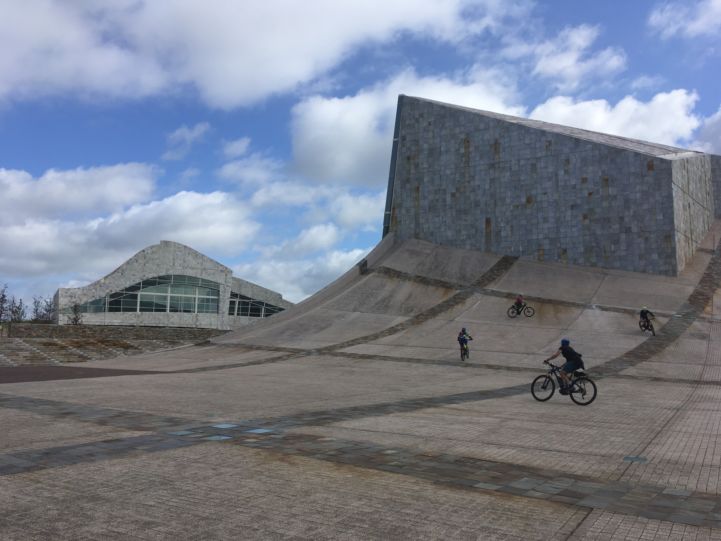
The last speaker of the day was Manuel Calvo from Conbici. He explained the structure of the Spanish National EuroVelo Coordination Centre, where ConBici acts as secretariat. They are using EuroVelo as an arrowhead to develop cycle tourism in Spain, focusing on the discovery of the territory, which is the first cultural heritage. The next challenge in the development of cycle tourism in Spain is to focus on the Spanish cycling tourists and encourage them to discover their own country by bike!
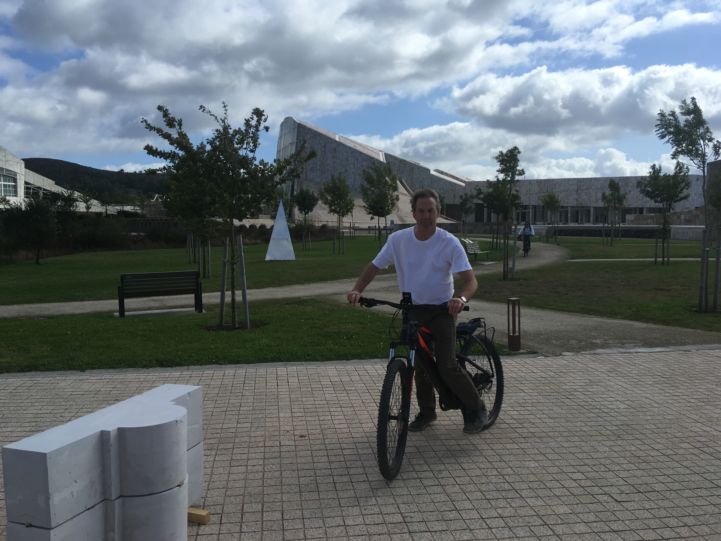
After an inspirational day full of knowledge sharing, participants were invited to pursue their discovery of the pilgrimage city with a guided walking tour and a networking dinner made of local dishes. On the second day, a site visit of the Santiago region by bicycle was organised and ended in the architecturally fascinating City of Culture, a complex of cultural buildings designed to look like rolling hills.
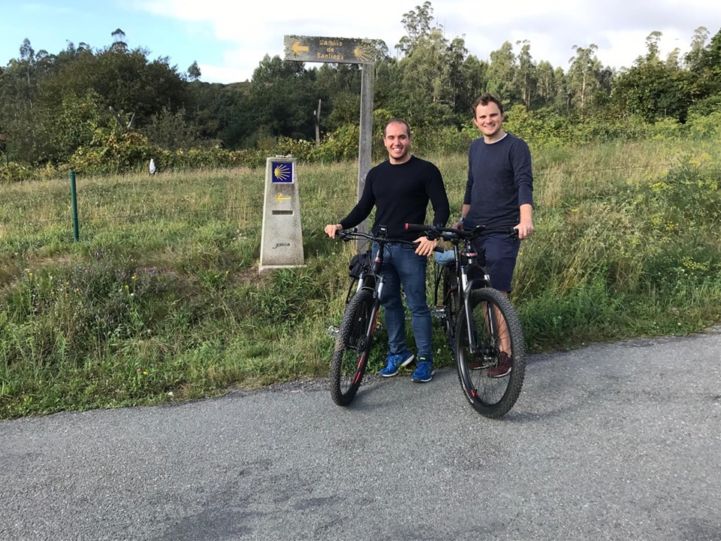
COSME is the EU programme for the Competitiveness of Small and Medium-sized Enterprises (SMEs) and this project is funded by the European Commission’s Executive Agency for Small and Medium-sized Enterprises (EASME).

Author(s): Maarten Van Hecke